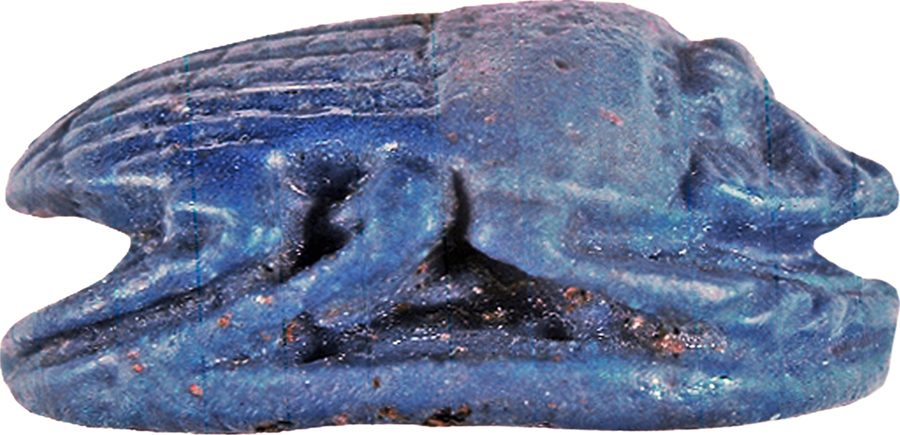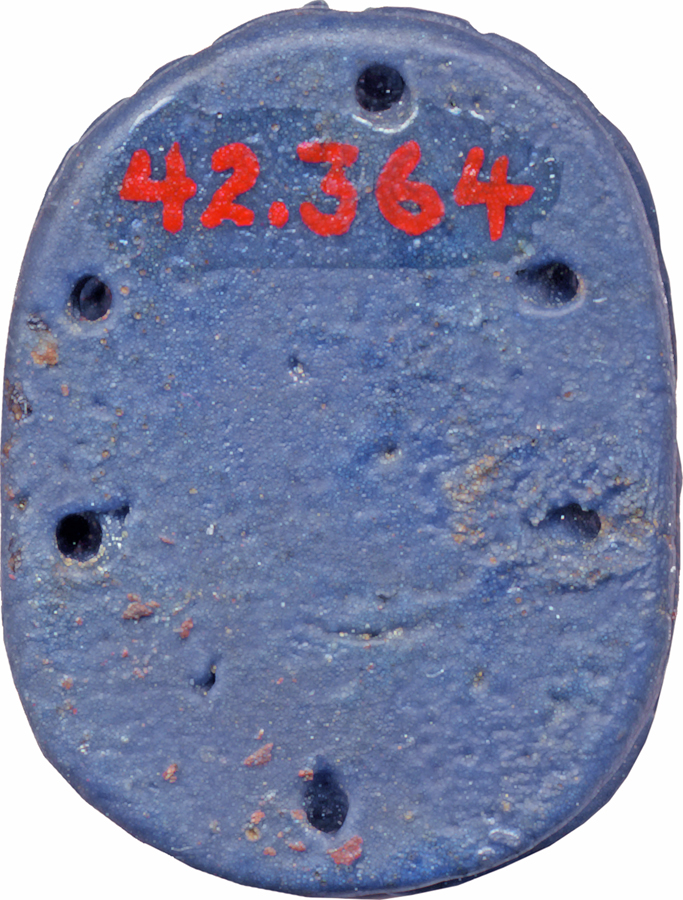Scarab
(Ancient Egypt and Nubia )
This faience scarab is the centerpiece of a winged scarab amulet with a flat underside and drill-holes at the bottom. The design of the back is very detailed, with deeply incised hatch lines for the wing cases and irregular line flow. The pattern is unevenly spaced, the proportions of the top are balanced and the extremities are slender. The piece is very carefully made, and the workmanship is good.
This scarab functioned as a funerary amulet and was originally attached to mummy bandages along with wings. Winged scarabs should assure the renewal of the deceased by meeting the sun god in the afterlife.
Friezes with a pearl pattern are not very common for scarabs with flat undersides, but were popular for natural formed scarabs.
Provenance
Provenance (from the French provenir, 'to come from/forth') is the chronology of the ownership, custody, or location of a historical object. Learn more about provenance at the Walters.
Henry Walters, Baltimore [date and mode of acquisition unknown]; Walters Art Museum, 1931, by bequest.
Exhibitions
| 1982 | 3000 Years of Glass: Treasures from The Walters Art Gallery. The Walters Art Gallery, Baltimore. |
Conservation
| Date | Description | Narrative |
|---|---|---|
| 11/20/1978 | Examination | examined for condition |
Geographies
Egypt (Place of Origin)
Measurements
H: 9/16 x W: 7/8 x L: 1 1/8 in. (1.4 x 2.2 x 2.9 cm)
Credit Line
Acquired by Henry Walters
Location in Museum
Accession Number
In libraries, galleries, museums, and archives, an accession number is a unique identifier assigned to each object in the collection.
In libraries, galleries, museums, and archives, an accession number is a unique identifier assigned to each object in the collection.
42.364






